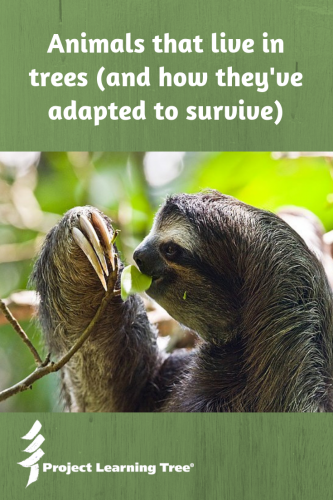 What do sloths, koalas, flying snakes, geckos, tarsiers, and opossums all have in common? They form an interesting group of organisms that are adapted to tree-top living. Arboreal animals spend most of their time eating, sleeping, playing and raising their young in the trees.
What do sloths, koalas, flying snakes, geckos, tarsiers, and opossums all have in common? They form an interesting group of organisms that are adapted to tree-top living. Arboreal animals spend most of their time eating, sleeping, playing and raising their young in the trees.
Tree-top living has many challenges, and these critters have some very specialized adaptations that allow them to be successful tree-huggers. The adaptations highlighted here will give you a fascinating way to introduce the study of how animals use their body parts in different ways to survive in their habitat. Studying tree-dwelling animals can also enhance your lessons on ecosystems, food webs, and biodiversity.
Forests are home to an amazing diversity of animals. Tree-dwelling animals are found mostly in the tree canopy and the layer of treetops that peek above the forest into the clouds, called the emergent layer. Geographically, arboreal animals are concentrated in tropical forests, but they are also found in all forest ecosystems throughout the world. Many different types of animals can be found living in the trees, including insects, arachnids, amphibians, reptiles, birds, and mammals.
Life in the trees presents some interesting challenges for animals, such as moving among the trees, taking care of offspring, gathering and storing food, and taking shelter in extreme weather. Many of these challenges are solved with physical adaptions that have resulted in very interesting and adorable critters. The adaptations of tree-dwelling organisms are an excellent example of one of the core themes in biology: form fits function. The specialized anatomy of organisms is perfectly engineered for the function it performs. The adaptations listed below have solved many of the problems with tree-top living, and these features are fascinating to study.
Prehensile tails
We often envision monkeys hanging and swinging from trees by their tails. However, not all primates have prehensile tales. These specially adapted tails can be used for a variety of tasks such as gathering food, climbing, and holding objects. It’s like having an extra arm. Animals such as opossums, harvest mice, spider monkeys, and tree pangolins have prehensile tails. A slightly modified version of the prehensile tail, referred to as a partially prehensile tail, is only able to be used to anchor an animal’s body as it climbs trees.
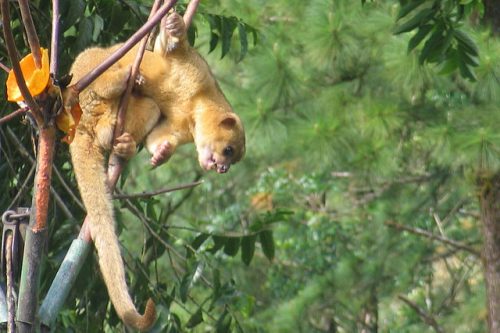
Membranes for gliding
Many arboreal animals use gliding and parachuting to bridge the gap between trees. Stretchy membranes between legs, like in the case of flying squirrels, help increase the surface area of some arboreal animals without adding weight, allowing them to glide from trees. Flying geckos, flying frogs, flying lemurs, and flying mice also take advantage of gliding to descend from trees. In some cases, such as the world’s smallest gliding mammal, the pigmy gliding possum (AKA “flying mouse”), extra membranes connect the animal’s elbows to its knees and its tail is used to steer as it glides from branch to branch.
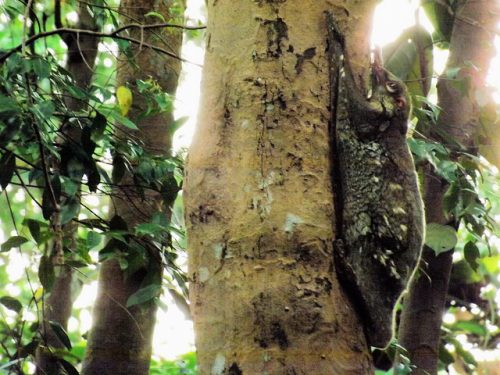
Low center of gravity
Animals that live on the ground tend to have a center of mass that swings side to side while moving. If arboreal animals used the same strategy, their center of mass may move beyond the edge of a branch, resulting in a fall. Having a low center of mass is a useful adaptation for some arboreal animals, minimizing the chances of falling out the trees. Some animals also use a diagonal sequence gait to stay balanced.
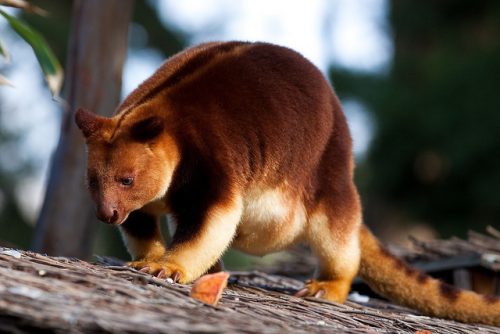
Swinging from one tree to another using only their arms
Swinging from tree to tree is an extremely helpful adaptation if you are living in the forest canopy. This ability, which scientists refer to as brachiation, is only found in some primates with arms long enough for them to cross the gaps between trees or reach resources such as fruit on another tree. Primates with the ability to brachiate also have some other helpful features, such as shorter spines, short fingernails instead of claws, long curved fingers and smaller thumbs, long forelimbs, and wrists with the ability to freely rotate.
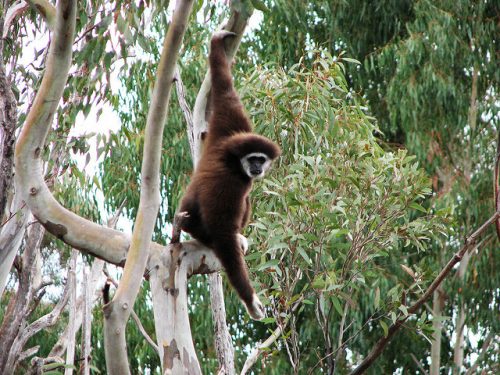
Gripping feet
Animals that live in trees must be able to hold on tightly. Claws, adhesive pads, flexible ankle joints (such as a squirrel’s) that can turn forwards and backwards are all adaptions useful for staying in place. Arboreal primates have hairless fingertips that allow the animal’s hand to squeeze the branch between the fingertips to generate friction.
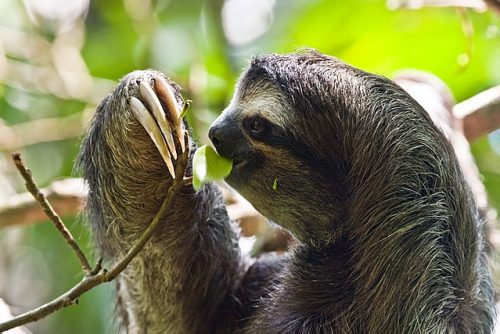
How do scientists study the canopy?
As you can imagine, exploring the treetop canopy is not easy for us terrestrial organisms. There is much yet to be discovered in arboreal ecosystems. Those brave enough to harness-up and climb to the top must be very careful not to disturb the plants and animals that make the treetops their home. The most common methods for treetop exploration are similar to what you might find at a high-ropes course – consisting of ropes, hanging walkways and ladders.
Not only must scientists safely climb to the forest canopy, but they must carry along with them their tools and equipment to collect data and specimens. Even more challenging is locating tree dwellers for observation and study. This group of animals tend to be rather elusive and cryptic. Ecologists would love to have the same adaptations as arboreal animals – prehensile tails and brachiating limbs would come in handy!
Engage your students!
Now that you’re equipped with some fun and interesting information about tree-dwelling animals, how do you engage your students around these topics?
Check out Activity 22—Trees As Habitats in PLT’s PreK-8 Environmental Education Activity Guide. In this activity, students inventory the plants and animals that live in, on, and around trees and discover how plants and animals depend on trees in many ways.
Here are some more ideas:
- Ask your students: What tree-dwellers are living in your backyard? Research local critters and conservation strategies.
- Challenge students to design the ultimate tree-dwelling organism.
- Design a virtual scavenger hunt to investigate unique tree-dwellers around the world.
- Make a game! Students work in groups to create a game featuring critters that live in the trees.
- Research a cute tree-dweller! Here are some fun arboreal animals to check out:
- Brushtail Possum
- Genet
- Silky Anteater
- Greater Glider
- Tarsier
- Kinkajou
- Tree Kangaroo
- Sunda Flying Lemur
- Green Tree Python
- Fruit Bat
- Tree Porcupines
What’s your favorite arboreal animal?


